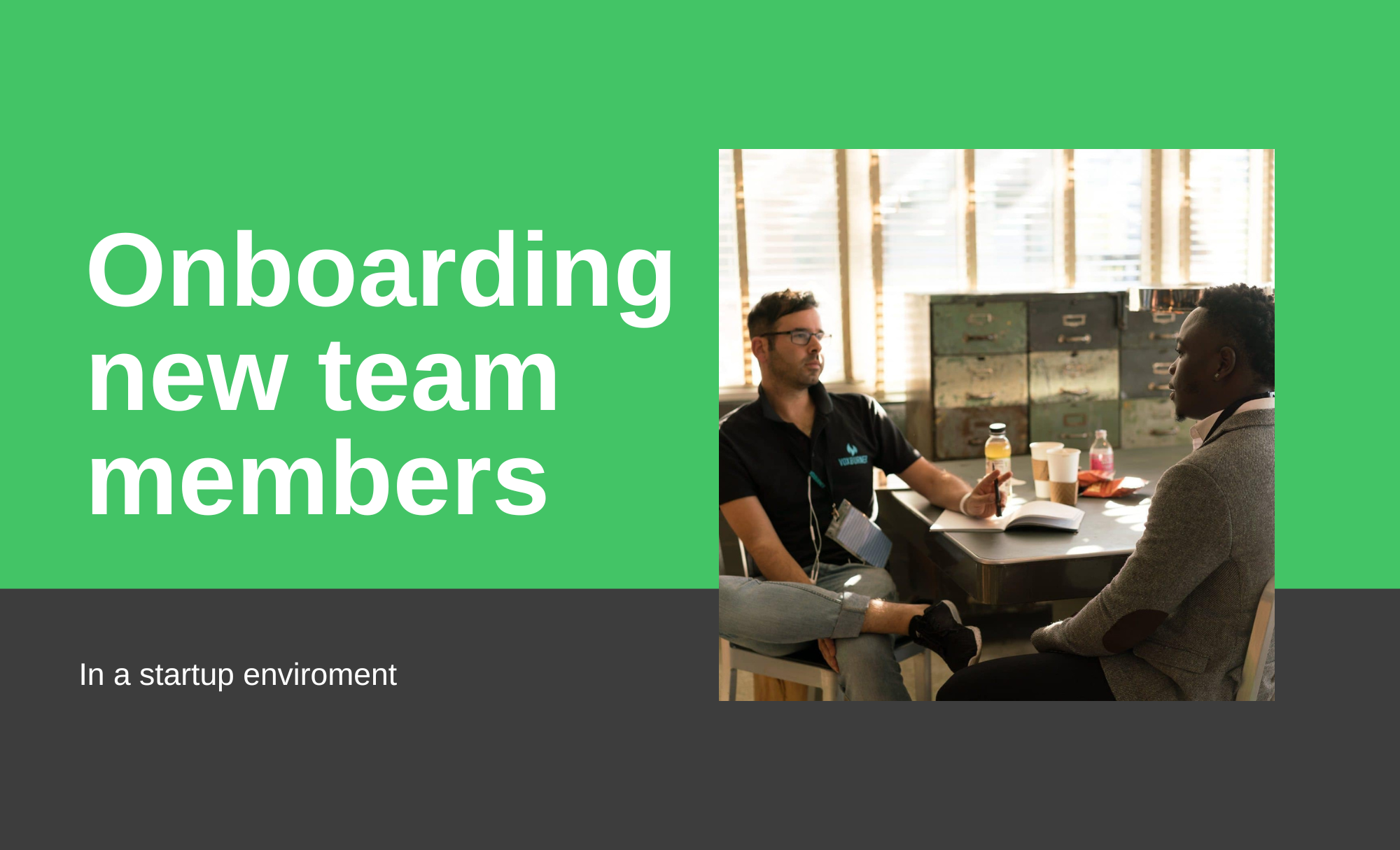Onboarding new team members in a startup is a crucial process that sets the tone for their experience and contributes to their success within the company.
We will cover a step-by-step guide here on the core components that can make this successful for you, in the least amount of effort possible.
Preparation
Maximizing the new team members’ impact in the short term and especially their motivation to learn requires a bit of a prep. Most of these points are small mindful elements that have a proper impact
Pre-boarding Communication
Before the new team member’s first day, send them an email with important information such as their start date, time, location (if applicable), dress code, and any paperwork or documents they need to bring.
Make sure to maintain a friendly communication style, and not put a rush on anything that is not really needed.
Set Up their workspace
Ensure their workstation, tools, and equipment are ready and functioning. This could include a computer, software, access to company systems, and any necessary supplies.
Now more often than not workspace is remote, so you have to make sure that the laptops or workstations (or whatever) are delivered before their starting date.
Now there are plenty of simple MDM choices out there to remotely install everything – so that is up to you how you want to handle it
Would highly recommend on the supplies to add a bit of company memorabilia. Simple things like a mug, a t-shirt, a pen, or a notebook really go a long way. and they are not necessarily expensive.
Prepare Training Materials
Have training materials, guides, and resources ready for them. This could be in the form of documents, videos, or presentations.
My favorite is preparing a confluence document (or whatever your documentation tool of choice) and sharing it with the first email that you send them. This will be a static resource for onboarding new team members where you can add core policies.
Have an onboarding plan
Make sure that the people that they will need help to be onboarded, already have space in their calendar to actually spend time with the new hire. This is more often than not left for the last day, and you end up burning a couple of days just because someone is extremely busy.
First day
Warm Welcome
Greet them warmly on their first day. Introduce them to the team and show them around the office (if applicable).
This is supposed to be the day where HR takes most of the heavy lifting (and if no HR, then you who are reading this article). Your core focus is to enable moving from an “interview” communication to a “team member” communication.
Company Overview
Yes, everything is on the website, but this is extra important. You want someone that understands what you are trying to do, and does it within this culture.
Provide an overview of the company’s history, mission, values, and goals. Explain the startup’s unique culture and what makes it different.
Even talk about the little things like – shooting a slack message an not an email because this is how we do it here.
Complete Documentation
Have them fill out any necessary paperwork, such as tax forms, NDAs, or employment contracts.
Setup Accounts
Help them set up their email, software accounts, and any other tools they’ll need for their job. I know this sounds self-explanatory, but sometimes that GitHub admin is not available and your new developer does not have access to GitHub
Review responsibilities
Go over their job description and responsibilities in detail. Clarify their main tasks and depending on the case, settle on short-term expectations.
This will enable them to think about these short-term expectations and focus on them when they are getting onboarded.
Provide Resources
Give them access to any internal resources, knowledge bases, or learning materials they might need.
Next days
With the first day out of the way, here is the core focus of the next days, as the brand new team member is learning more about the organization.
Performance Expectations
Discuss what success looks like in their role and what goals they should aim for. As they get to learn their day to day a bit better, these expecations are not just theoretical KPI’s, but also tangible.
Training Plan
Outline their training schedule, including any formal training sessions, mentorship, and hands-on learning. These need to be scheduled and already added to their calendar. Plan in advance. It is easier.
Tech Stack
Familiarize them with the company’s software, tools, and systems. Provide any necessary training on how to use them effectively. No one knows about your internal tool to handle x company specific niche task. Tell them about it. Show it to them.
Team Introduction
Introduce them to their immediate team members, as well as key stakeholders or cross-functional teams they’ll be working with. Define what is their reporting line. Whom is responsible for their delivery AND whom to reach if they get stuck.
I know you are looking for someone that can do this by themselves, and they will, but help them first.
Team Dynamics
Onboarding new team members means also explaining team dynamics, communication preferences, and any specific protocols they should be aware of.
Share insights about the company’s culture, including any traditions, values, and ways of working. Highlight any regular events, meetings, or activities that they should be aware of.
First tasks
Start with smaller tasks or projects to help them get acclimated before diving into larger responsibilities. For developers, give them a small bug to find their way around your project, learn the development workflow etc.
Plan something gradual. Maybe even do the task with them.
Let them know it’s okay to ask questions and seek clarification whenever needed.
Follow-Up and Support
Ongoing Support
Regularly check in on their progress and provide any additional support they may need. Sometimes this is contractually settled with a trial period and what not
Feedback Loop
Encourage open communication and provide constructive feedback to help them grow in their role. Discuss opportunities for further learning and growth within the company.
Last points
Remember, onboarding is not a one-size-fits-all process. Tailor it to the individual’s role, experience level, and learning style.
The specific characteristics and challenges of startups necessitate a flexible and tailored approach to onboarding new team members. This ensures that new team members receive the support and training they need to thrive in the unique environment of a startup.
Additionally, seek feedback from the new team member to continuously improve your onboarding process.





